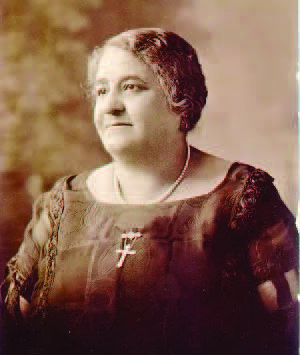Civil
Maggie Lena Walker: First Woman In America To Charter A Bank

By Jaelyn Scott
Winter Intern
New Journal and Guide
Maggie Lena Walker was born on July 15, 1864, in Richmond, Virginia. She was born to Elizabeth Draper, who worked on the Van Lew estate for Elizabeth Van Lew, an abolitionist, unionist, and spy for the union. Her father was Eccles Cuthbert, an Irish American who reported from Virginia for the New York Herald. Elizabeth Draper would marry the Van Lew’s household butler, William Mitchell, and in 1870 they would have Maggie’s half-brother, Johnie Mitchell.
William Mitchell would later leave the Van Lew household, and he became the headwaiter at the prestigious Saint Charles hotel in Richmond. Because of this, the family was able to set out and rent a small house of their own in College Alley, which was near the Medical College of Virginia. However, tragedy struck the family when Mitchell was found drowned in the James River, and while his death was ruled a suicide, Maggie believed that he was murdered.
Because of the death, the family was thrown into poverty, and her mother decided to begin a small laundry business. Maggie had to help her mother financially, so she assisted with the business by returning clean laundry to white patrons. It was because of this business that she was able to see firsthand the economic and social disparity between the races.
She attended multiple schools in Richmond and trained to become a teacher at the Richmond Colored Normal School for girls and graduated in 1883. After graduation, she would teach at Valley School for three years, until she met and married her husband, Armstead Walker Jr., a successful brick maker, in 1886. They would go on to have three sons and an adopted daughter together, but due to the policies at the time forbidding the employment of married women, Walker had to stop teaching.
Before she got married, she joined the Independent Order of St. Luke in 1881 at the age of 14. The organization was founded in 1867 by Mary Prout as a benevolent organization that helped the sick and elderly in Richmond. During her time in the St. Luke, she held many high-ranking positions, including the great secretary, a position she held until her passing. She started publishing for the organization in 1902, the St. Luke Herald, and she encouraged African-Americans in Richmond to harness their economic power by establishing their own institutions through the newspaper. In fact, she, too, would form her own institutions with her first business endeavor being a community insurance company for women.
However, it was in 1903 when she made history and founded the St. Luke’s Penny Savings Bank. She became the first woman of any race to charter a bank in the United States, appealing not only to adults but children as well to encourage them to save their money. By 1924, the bank had spread to other parts of Virginia and had over 50,000 members. It was even able to survive the Great Depression, while other banks collapsed at the time.
Even after the opening and operation of her bank, she continued to make history for African-American communities. After the passing of her husband in 1915, she was left in charge of the large estate. Despite the hardship she continued to hold leadership in other organizations as well, including the National Association of Colored Women and serving as the vice president of the Richmond chapter of the NAACP. Even after becoming wheelchair bound due to illness in 1928, she remained as a leader in the Richmond African-American community, fighting for our rights and fighting for women’s rights as well.
She stayed in that position until her passing on December 15, 1934, due to complications with diabetes. Her home in Richmond has since been designated as a National History Site by the National Park service, and you can still visit it today.














